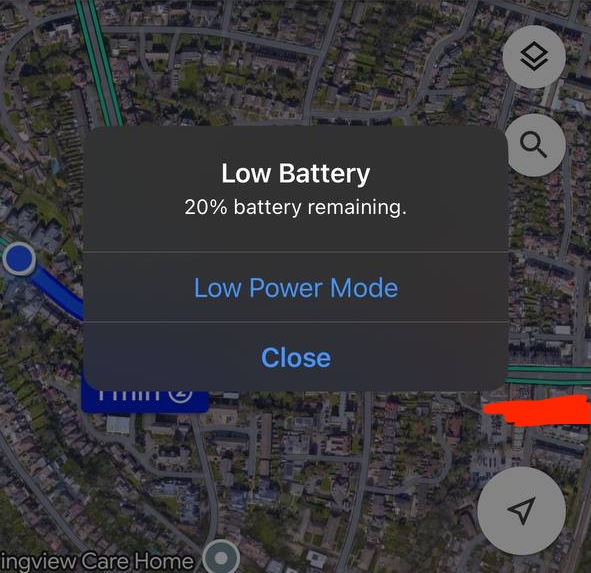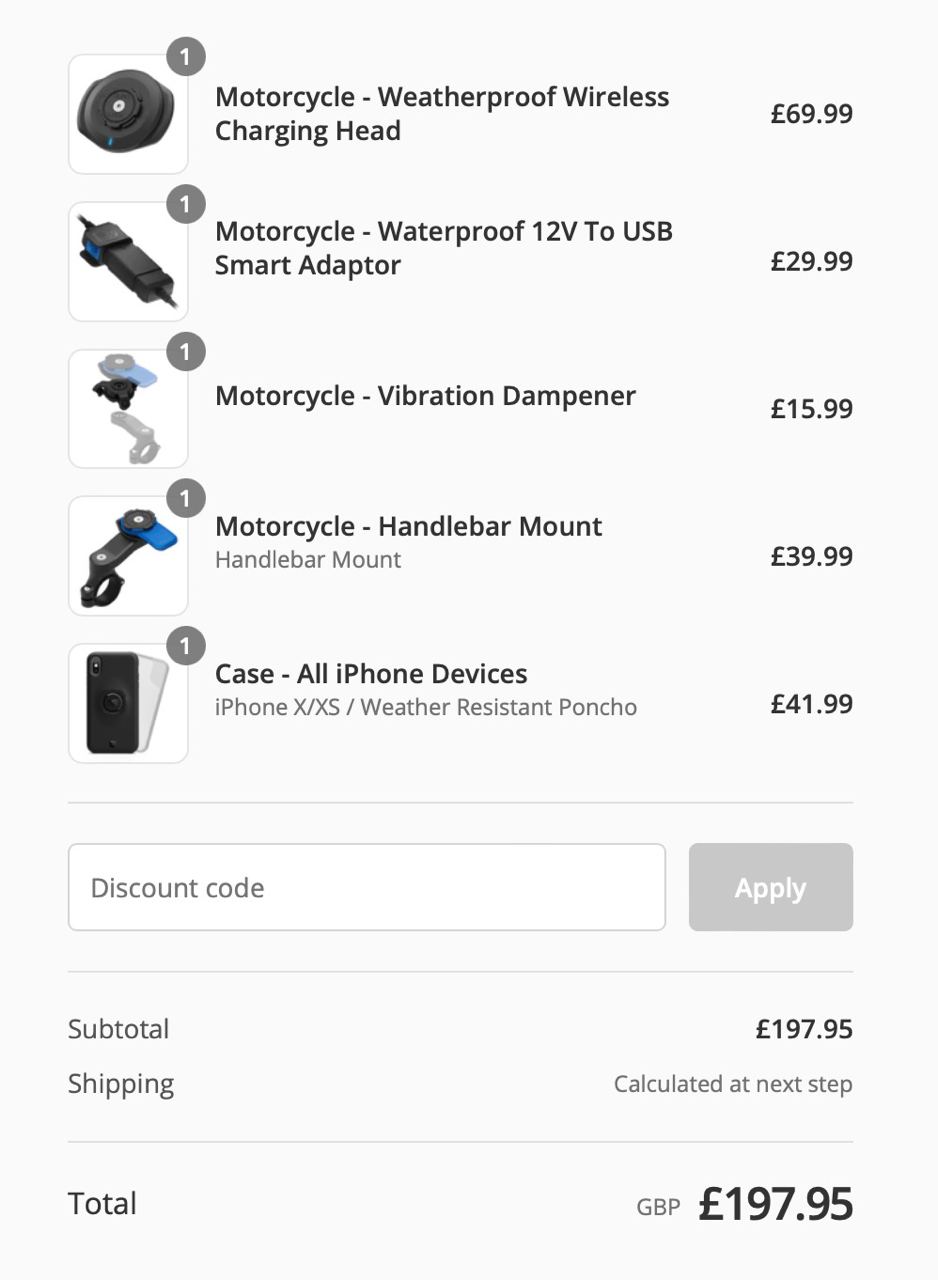- Published on
Problems with Using a Phone as a Motorcycle Satnav
- Authors

- Name
- Dmitry
The aim of this article is to compile all my complaints about using a mobile phone as a motorcycle navigator, in favour of a dedicated navigation device.

These points apply to both iPhones and Android devices—the issues discussed here are not platform-specific.
I am not promoting any specific navigator, I just want to highlight the inherent problems of using a phone as a navigation device on a motorcycle.
I have been asked for advice on motorcycle navigation multiple times, always assuming that the navigation must be done via a phone. I am tired of repeating myself, so I plan to simply share a link to this article in the future, where my subjective opinion on the topic is gathered.
My Experience
I have been using a TomTom Rider 450 since 2017, and I still have many complaints about it. I use it exclusively for long rides.
I also use an iPhone for navigation in the city and for short coffee runs.
I have tried all sorts of mounts from AliExpress. Currently, I use a Quad Lock with wireless charging and a vibration damper.
Mobile Phone
Pros
- Always with you and owned by everyone
- Fast interface, quick location search with internet access
- A huge selection of maps, some of which generate great routes
Cons
Screen does not work in the rain
- Raindrops press on the screen, interfering with navigation
- Zooming in and out becomes impossible
- Locking the screen and stopping to adjust navigation is a bad idea. You need to find a dry spot to do this. Constantly stopping in a group is also frustrating
Charging via cable does not work in the rain
- I have thrown away countless corroded charging cables
Wireless charging is not a perfect solution
- Even though it is waterproof, it heats up and charges poorly. Wireless charging consumes more energy as part of it dissipates as heat
- With navigation running (and sometimes constant network searching), wireless charging merely maintains the battery level rather than actually charging it
Phone interactivity issues
- If a message or call comes in, navigation often gets interrupted
- If you need to make a call, navigation disappears
- https://x.com/demenchuk/status/1898413953052537027
- To close this message - you need to stop

Not convenient to use with gloves
- I have had many gloves that supposedly work with phone screens. None of them worked properly. Some required tapping at a strange angle, some did not work at all
- The phone interface is not designed for gloves. Small buttons and multi-touch zooming are a real challenge while wearing gloves
Vibrations damage the phone’s camera
- This can be solved with a vibration damper (but this is not 100% certain)
Inaccurate GPS and weak signal
- Phones typically have a 1Hz GPS refresh rate, meaning they update location once per second. This results in speed readings that are predictive rather than real-time. This is especially concerning for motorcycles, where rapid acceleration and deceleration can lead to incorrect speed readings. I wouldn't trust it near speed cameras.
- In contrast, dedicated satnavs have a much higher GPS refresh rate and a stronger signal, ensuring that your speed reading is accurate when passing speed cameras.
- If you have ever used Google Maps in big cities with skyscrapers, you have probably noticed that navigation glitches and jumps around due to signal interference. Dedicated satnavs perform far better in these environments, providing more stable and accurate positioning.
Too many navigation apps, none of them perfect
- The wide variety of maps available on a phone is both a blessing and a curse. No single app does everything well. Some are great for offline use, some excel at finding the fastest routes, others have the best navigation interface, and so on.
- On a motorcycle, we don’t always want the fastest route. Apps like Google Maps and Waze are excellent for city navigation but fail when it comes to planning scenic, enjoyable rides outside the city.
- Most apps require a constant internet connection, which can be unreliable, especially in rural areas.
- Not all apps show speed cameras.
- The best navigation apps aren’t free. For example, Calimoto, one of the most popular motorcycle-specific apps, comes at a premium price.
- Finding an app that does everything is nearly impossible, meaning you’ll end up juggling multiple apps mid-trip, which is both stressful and inconvenient while riding.
Dedicated Navigator
Motorcycle-specific navigators like the TomTom Rider 450/550 or Garmin Zūmo XT do not have the issues listed above. Therefore, I will go straight to the downsides:
Cons
- Navigators are slow. Planning a route directly on the device is a nightmare. However, you can plan on a computer or phone, and syncing is very easy.
- High start-up cost. Most people already own a smartphone, so they are not spending hundreds upfront.
- Initial setup hassle. Setting up a dedicated satnav requires installing a separate mount, wiring for power, and syncing it with other devices, which can be a tedious process.
- Dwindling support. Many manufacturers are shifting their focus to app-based navigation instead of hardware.
- Carrying another device. A dedicated navigator is yet another gadget to pack, charge, and maintain. This is not a problem to me as I permanently leave the satnav on a bike.
Cost Comparison
People often justify using a phone as a cheaper alternative to a £300-£400 navigator.
Here is the cost just to connect a phone to a motorcycle (prices at 2023):

Now, add the cost of an old iPhone X (~£160). Given that most people want to reuse their main phone worth >£1,000, it does not turn out to be such a cheap solution, especially considering the downsides I mentioned earlier.
Additionally, let’s consider the cost of purchasing maps for a phone to compare which option is actually cheaper.
Calimoto is one of the most popular apps for route planning in the UK. Buying maps for it costs €249.99, which is equivalent to the price of a dedicated navigator with pre-installed maps for the entire world.

I'll leave it for you to do the maths.
Conclusion
Unfortunately, I see a trend where dedicated navigators are becoming less popular. Speaking with TomTom support, it seems they are also not interested in developing hardware that lasts for years and does not generate ongoing revenue.
When I asked whether there would be an update for the TomTom Rider, I was told that all efforts are focused on creating a mobile app with a subscription model. I understand the business motivation, but I think this is a huge mistake.
I have come to the conclusion that a phone is great for short day trips or city riding, while a dedicated navigator is necessary for long trips and harsh conditions. Swapping their roles will only lead to frustration.
A phone is also good enough to survive the first year of riding. A dedicated satnav is an investment and completely optional. However, it makes a huge difference. It’s similar to having an intercom—until you ride in a group with one, it’s hard to understand how much difference it makes.